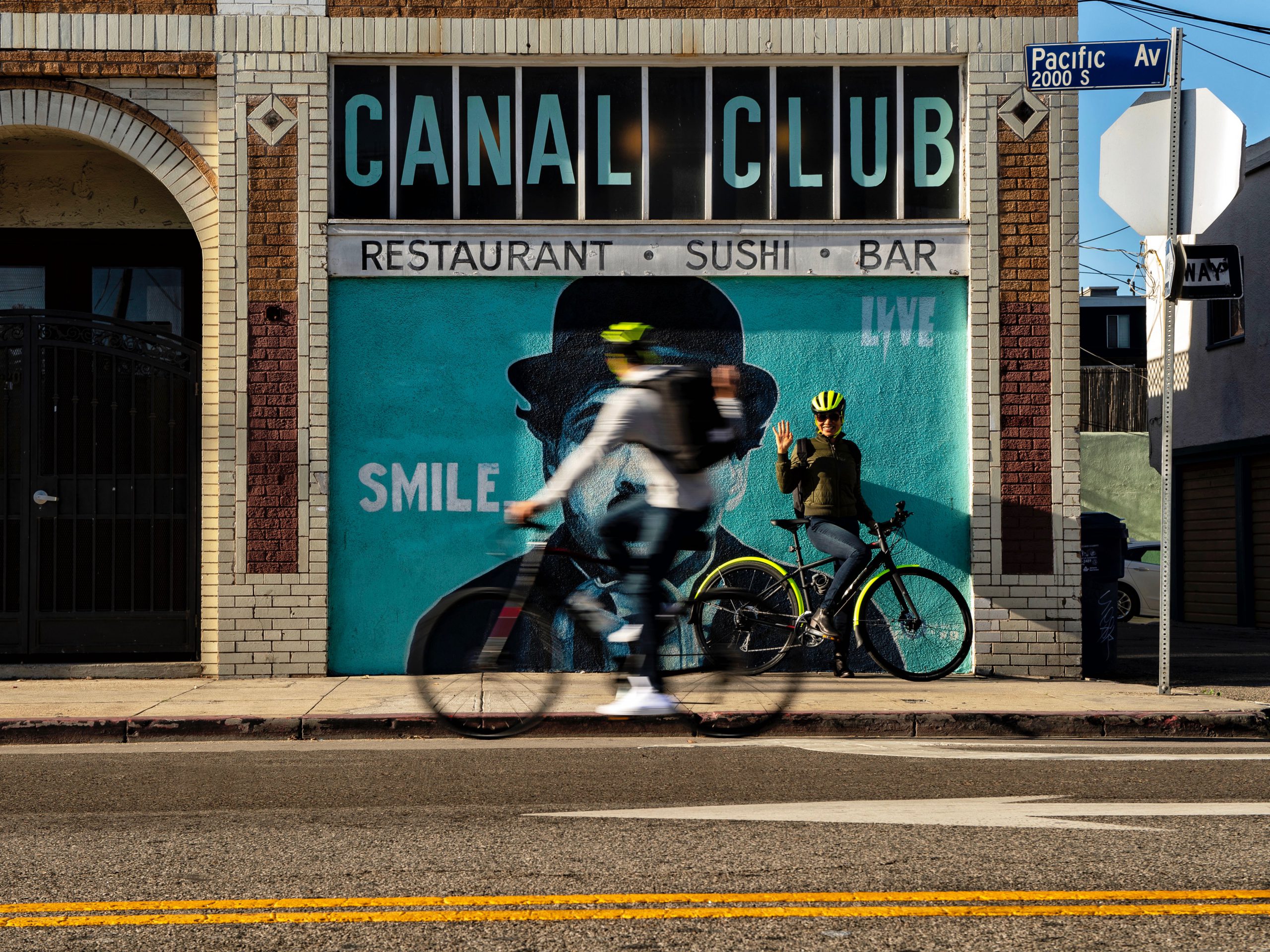- Bike basics & safety
- How to
- 22 March, 2021
- Trek
How to shift gears on a city bike Knowing how to properly shift gears can help make your daily commute faster, smoother, and more fun!
Whether you’re commuting to work, grabbing groceries, or exploring the city by bike, riding in the right gear can make every adventure better.
So—how do you know when you’re in the right gear? And how do you know when you should switch into a harder or easier one? Let’s start with the basics.
Most city bikes are equipped with shifters designed to be operated by your index finger and thumb. The shifter on the right controls the rear derailleur and the shifter on the left controls the front derailleur. Note: some city bikes have just one chainring in front and a wider spread of gears in the rear, which eliminates the need for a front shifter or front derailleur.
When you push the shifter with your thumb or pull with your index finger, you move your chain from gear to gear. Shifting your front derailleur (left hand) results in bigger changes in gearing, while shifting your rear derailleur (right hand) results in smaller gear changes.
Left hand—shifting the front derailleur between chain rings (bigger adjustments)
The left shifter controls your front derailleur, which moves the chain between the chainrings attached to your crankset. Shifting with your left hand will cause more dramatic changes in gearing and can be really helpful when you need to make a big gear adjustment quickly.
By pushing the left shifter paddle with your thumb, the derailleur will push the chain up to a bigger chainring—a harder gear. A harder gear takes more effort to pedal, but you’ll move farther with each pedal stroke.
Pulling the shifter trigger inward with your index finger will pull the chain down to a smaller chainring—an easier gear. This makes pedaling easier, but you won’t move as far or as fast.
Use the smaller chainring, or the easiest gear, when pedaling uphill, carrying a heavier load, or approaching a stop. Use the bigger chainring, or hardest gear, when you want to pedal hard to cover a lot of ground fast.
Right hand—shifting the rear derailleur between cogs (smaller adjustments)
Your right shifter controls your rear derailleur, which shifts the chain across cogs in your cassette. In a cassette, the smaller size cogs are actually the harder, faster gears and the bigger cogs are the easier, slower gears. This means the same shifting motions you use with your left hand deliver the opposite result with your right hand.
By pulling the shifter trigger with your index finger, the rear derailleur shifts the chain to a smaller cog—a harder but faster gear. Pushing the paddle with your thumb will shift the chain to a bigger cog—a slower but easier gear.
How to avoid cross-chaining
You’ll want to avoid being in the hardest gear on one shifter and the easiest gear on the other. This is called “cross-chaining” because the chain is running at an angle instead of more or less in a straight line. Cross-chaining puts a lot of strain on the chain and often causes it to rub against the front derailleur. This makes a lot of irritating noise and can be rough on your gears.
How to find the best gear combination
There’s no recipe for the perfect gear combo—it’s really a matter of personal preference. Don’t be afraid to play around to find the most comfortable and efficient rate of pedaling, or “cadence,” for you.
Like we mentioned earlier, shifting your front derailleur (left hand) results in more noticeable changes in gearing, while shifting your rear derailleur (right hand) results in smaller gear changes. With practice, you’ll find that front shifting is helpful for big changes in elevation and rear shifting is good for fine tuning your gearing until you’re pedaling at a rate that’s comfortable for you.
In general, most riders find a cadence of about 90 pedal rotations per minute to be the most efficient and comfortable. A slower cadence can feel like a struggle while a faster cadence might feel like you’re pedaling a ton but not really going anywhere. If you’re interested in measuring your cadence, many cycling computers or apps can read this with a sensor. Using a sensor to measure your cadence can be a great way to learn when it’s a good time to change gears.
Pro tip: pedal lightly while shifting!
You need to keep pedaling to be able to shift, but shifting works best (and is the smoothest) when you’re pedaling lightly. If you’ve got a lot of pressure on the pedals when shifting, the gear change tends to be clunky and abrupt. This is especially important on hills—so if you see a hill coming up, shift to an easier gear before you start climbing! And if you need to shift into easier gears as you climb, try to reduce the amount of pressure you’re putting on your pedals as you do so.
We also recommend shifting into an easier gear as you slow to a stop so you’re not struggling against a really hard gear when you have to start pedaling again.
Want some in-person advice?
Head to your local Trek retailer to learn more and get the most out of every ride.

About the Author: Trek
Our mission: we build only products we love, provide incredible hospitality to our customers, and change the world by getting more people on bikes.






